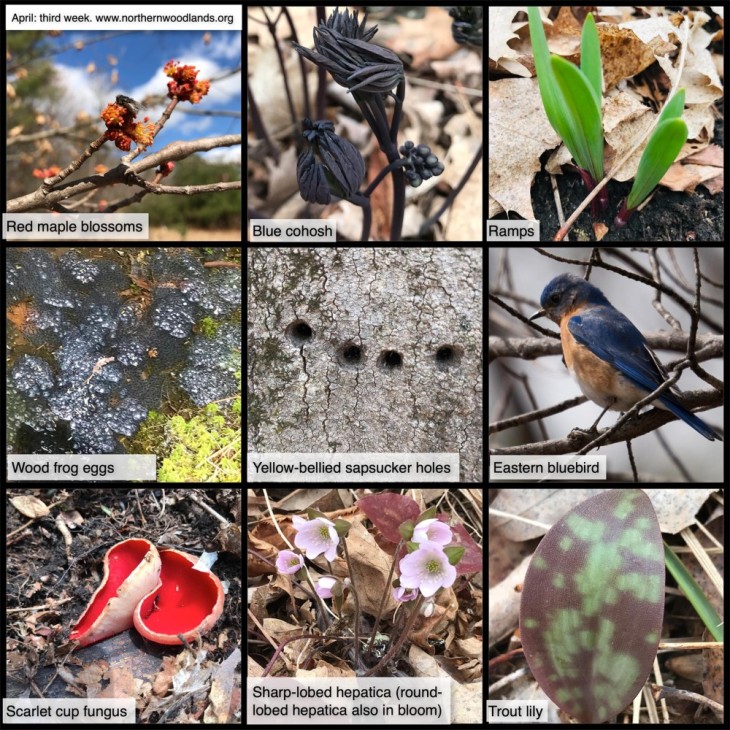In this difficult period, many of us find joy in observing local nature, and many families are seeking outdoor enrichment opportunities for children. Here are nine photographs taken this past week in forests within 15 miles of the Northern Woodlands office in Lyme, New Hampshire. We hope you enjoy using this grid as a prompt for your own explorations, or as the basis for a game of family forest tic-tac-toe.
What are you seeing in the woods this week? Share your images with us on Facebook, or submit a special photo for possible inclusion in our monthly online reader photo gallery.
Here are some notes about this week’s images:
Red maples are one of our first trees to bloom. We found early pollinators, including flies, visiting red maple blossoms, and found several different species of birds hopping around in their branches. Do you think there’s a connection there? Blooming stems make a great table centerpiece.
That strange dark plant sprouting in clusters on the forest floor is blue cohosh. You can learn more about the plant on Mary Holland’s excellent blog, “Naturally Curious.”
Ramps (also called wild leeks) have pushed up through the leaves. Look for them growing in moist, well drained soils. Here’s an article by our foraging columnist Ben Lord, including a simple recipe.
Wood frog eggs are floating in vernal pools. Here’s a great essay by Barb Mackay on what’s occurring this season in vernal pools.
This photo shows a line of yellow-bellied sapsucker holes that were made in a previous year. You’ll often find row after row of these lines on tree trunks. The birds have just returned from migration, and we’ve been seeing and hearing them frequently this week. Here’s a species profile from the Cornell Lab of Ornithology, including sound recordings.
Eastern bluebirds have been showing up in forest clearings, yards and meadows. Here’s an essay from deep in our archives by naturalist and author Ted Levin.
Cup fungi are some of the first soft bodied fungi to grow in spring. We’ve found several scarlet cup fungi, as well as at least one black cup species.
Hepatica is in bloom right now: both the sharp-lobed and blunt-lobed species. Their exquisite flowers can be white, pink or purple.
Trout lily isn’t in bloom yet, but it’s easy to find on the forest floor. Look for the mottled marking of its leaves, reminiscent of the splotchy sides of brook trout.



Discussion *